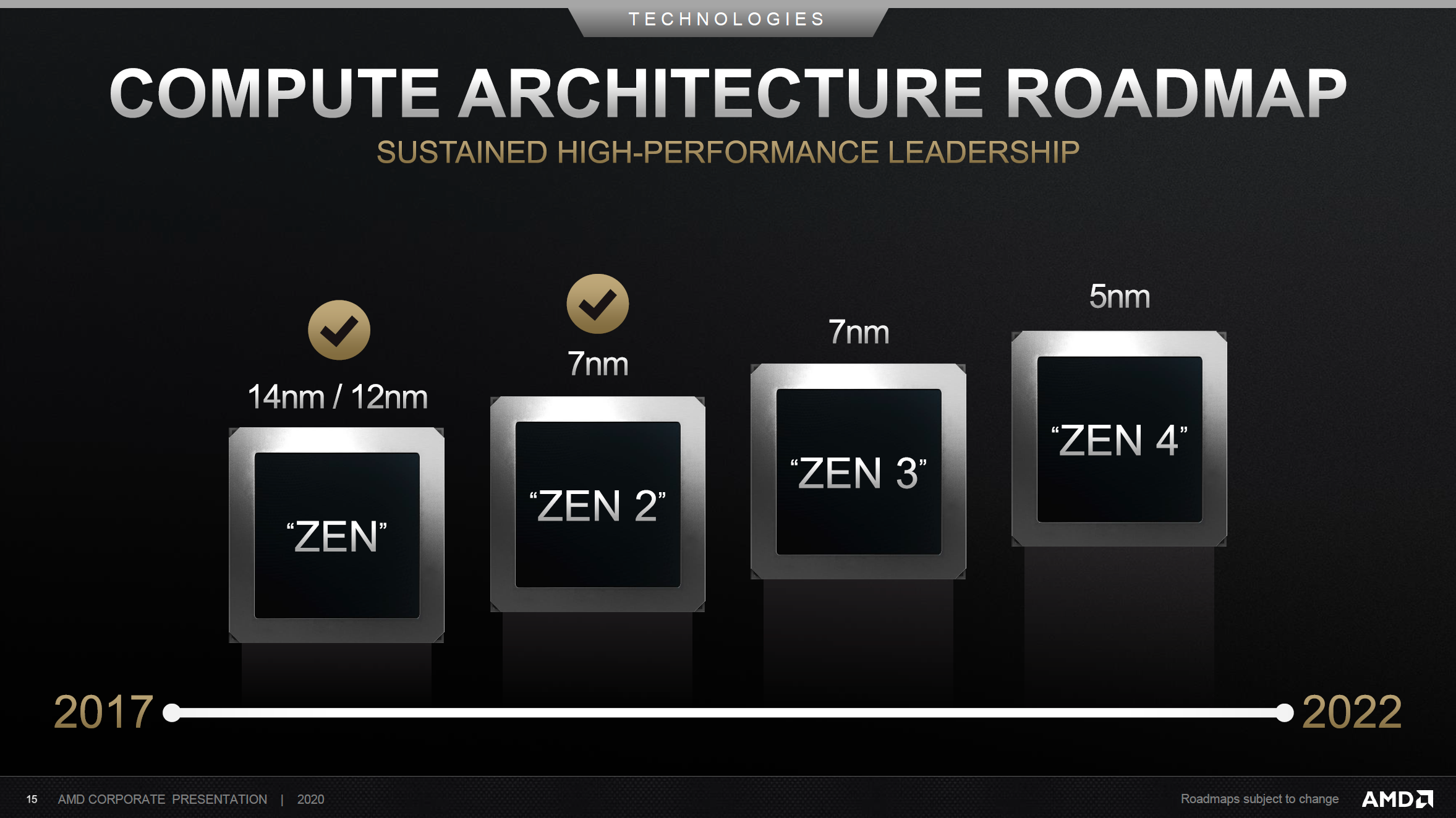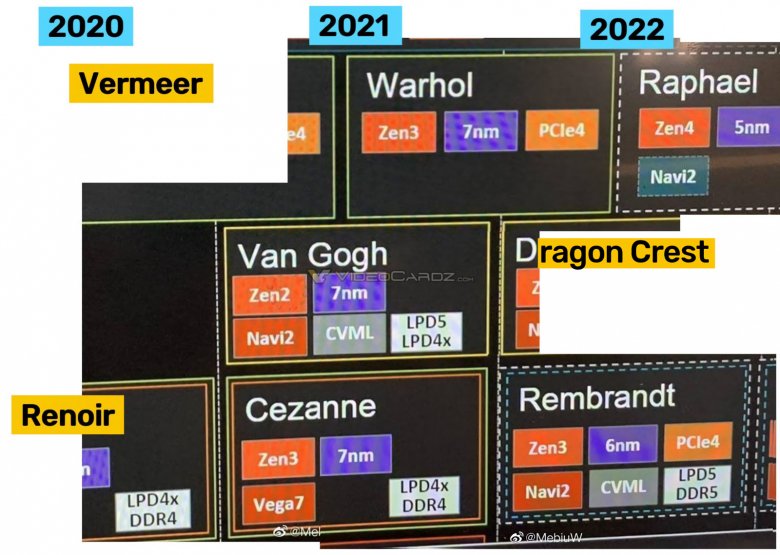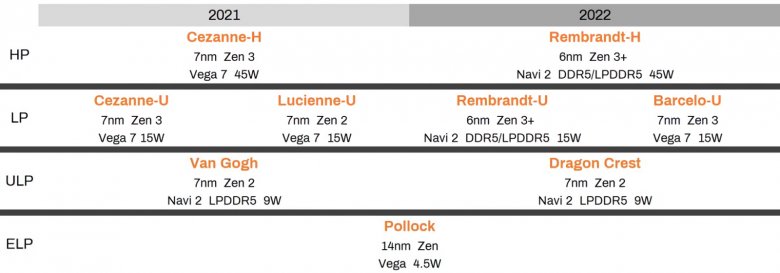In the spring of last year, the roadmap below, or this cut-out, appeared.
Gradually, more and more parts were added – now supplemented by Raphael – when the following form has emerged:
Zen 4
The roadmap thus confirms the code name of the desktop version Zen 4 as well as the assumption of the optional presence of integrated graphics Navi 2, ie RDNA 2 architectures. Compared to monolithic APUs, more processor power (more cores) can be expected, but less graphics power – graphics would make sense for desktop display, multimedia playback and basic 3D. However, because the field with “Navi2” is framed intermittently, it was probably not certain at the time the roadmap was created whether integrated graphics would be present or not. We do not know how AMD decided. If graphics are to be present, it is conceivable to integrate either at the central chiplet level or optionally instead of a single processor chiplet. Of course, the expected and previously confirmed 5nm process remains.
Zen 3+
It should be closer in time Zen 3+ with code designation Warhol. It seems that the 7nm production (although mentioned in this leaked roadmap) is really passé. A few months ago, news began to appear that Zen 3+ should be 6nm. If my memory serves me right, this possibility fell from the mouth of leaker Bondrew, editor of the RedGamingTech website, and now leaker kopite7kimi, who otherwise specializes more in Nvidia hardware, is also talking about the 6nm process. Personally, I think that this is not a drastic change and rather the original 7nm process was the so-called N7 + or 7nm process with EUV, which TSMC did not fully perform according to its ideas and replaced it with a new version, to differentiate called N6 / 6nm. However, the differences in parameters such as clock speed, consumption and density compared to the original 7nm (N7, N7P) process will not be large, probably at the level of percentage units. Replacing N7 + with N6 is more of a “successful runtime” replacement for a less successful process with a more successful one, but from the same generation.
As is already known (and as the redrawn roadmap above reminds us), the 6nm process will also be used for APUs Rembrandt, which is only the first “big” APU with graphics of the RDNA 2 architecture planned for next year. By moving the desktop processors (and about half a year later also the APU) to the 6nm process, the production capacity will increase, as 7nm will be released for other products (graphics, APUs, server processors). New production lines must be reserved for 6nm chips, as this is an EUV process for which the current 7nm are not equipped. Last week, we learned that production capacity for Ryzen desktop processors is set to increase by about 20% in the second quarter. Moving part of the production to the 6nm process will further increase the production capacity of desktop processors.
Everything is summarized by a redrawn roadmap, but it is necessary to keep in mind that this is no longer just data from leaks of official slides, but a compilation from various sources (and probably speculation), so take it as an orientation, not the future.
In the context of other products, namely Threadripper, the VideoCardz editorial staff adds that it has received information that the new generation (Chagall planned for about August) could also arise (already) on the 6nm process. This would co-explain the unusual delay between the release of the standard Ryzen 5000 desktop and the HEDT Threadripper series.
–





